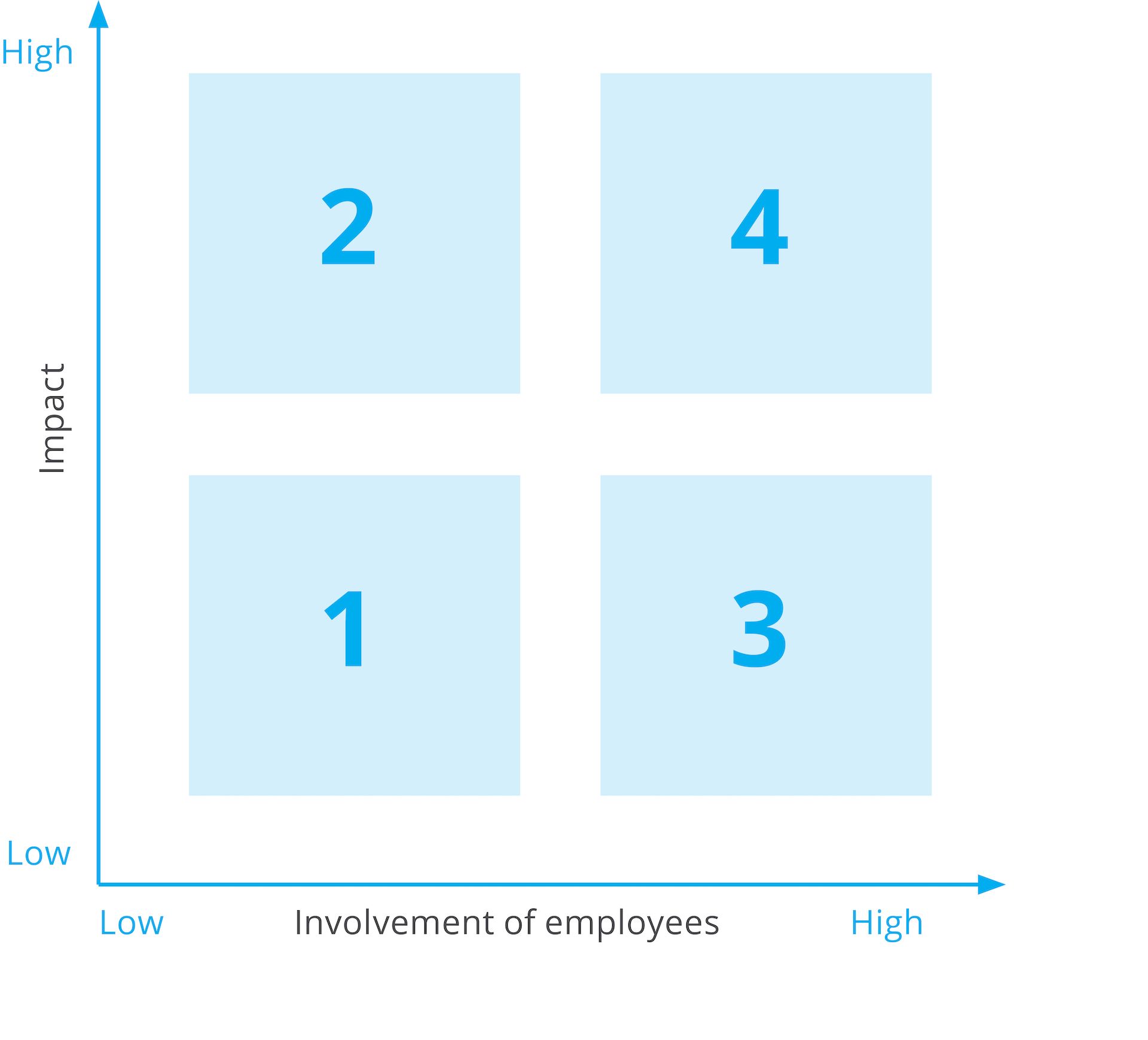High-involvement innovation (HII)
THE INNOVATION IMPERATIVE
It’s a simple message – innovation matters. In today’s environment, organizations need to change (and continue to change) what they offer the world and the ways they create and deliver it. It doesn’t matter what kind of organization we are – big or small, public or private. The innovation imperative lies at the heart of what we do. Staying ahead means innovating daily. And not just the big projects – we need a steady stream of incremental improvements, a regular pulse of innovation in our products, processes, and services.
That’s not going to happen by merely waving our arms and making bold statements about the importance of innovation. To enable everyday innovation, we need people who will get behind this concept and make it a reality. Most organizations have specialists – teams and individuals working in areas like R&D, product, and service development, whose formal role is to contribute to the innovation agenda.
But there’s a much bigger resource which can be engaged: everyday innovation from everyday people. High-involvement innovation (HII) taps into the creativity and energy of employees, harnessing their shared efforts towards strategic goals.
"Staying ahead means innovating daily. And not just the big projects – we need a steady stream of incremental improvements, a regular pulse of innovation in our products, processes, and services."
Key behaviors contributing to high-involvement innovation
High-involvement innovation of this kind is all about building a culture of innovation. A place where ‘the way we do things around here’ includes behaviors around questioning, exploring, challenging, and suggesting new approaches. And other behaviors around sharing ideas and building upon them, knocking them into shape and carrying them forward. And other behaviors around picking ideas up and running with them, co-operating and working together to overcome obstacles and find a way to create real value from the original good idea.

Figure 1: Key behaviors contributing to high-involvement innovation
WHY IT MATTERS
What do companies as diverse as Airbus, Liberty Global, Conoco Philips, the University of California San Diego, Fujitsu, and Nokia all have in common? Whether manufacturing or service, public or private sector, they all have been able to harness some of the innovation potentials across their workforce.
And it pays off. By mobilizing insights and creativity across their organizations, they have managed to make significant cost and time savings, enhance productivity, improve customer service, and generate new businesses.
This isn't a new thing – high-involvement innovation has been around for decades, and its systematic application underpins the success of major corporations like Toyota, General Electric, or Haier. And one of the 'secret' recipes for success amongst the 'Hundred Club' – companies that have survived and prospered for more than a century like Hella, Wilo, and Merck – is the engagement of their employees in innovation.
"And it pays off. By mobilising insights and creativity across their organizations, they have managed to make significant cost and time savings, enhance productivity, improve customer service, and generate new businesses."
A map of innovation
involvement
So where do people contribute to the innovation agenda? And, more importantly, where could they contribute? Figure 2 shows a simple map of the territory.

Figure 2: A map of innovation involvement
LESSONS FROM THE PAST
The good news about this map is that we understand some of the territories quite well. We’ve learned a lot about how best to organise specialists (quadrant 2) and how to mobilize a workforce to deliver a steady stream of continuous incremental innovations in shop floor or workplace teams (quadrant 3).
And we also have the results of many ‘expeditions’ into quadrant 4 territory, from which we can learn about what works and what the key barriers and problems might be. Explore the two examples to learn more.
Example 1
Imagine you have a workforce who enthusiastically take up your challenge and begin to suggest ideas.
Example 2
Or how about bootlegging bottom-up innovation, done guerrilla-style, below the organization’s radar?
